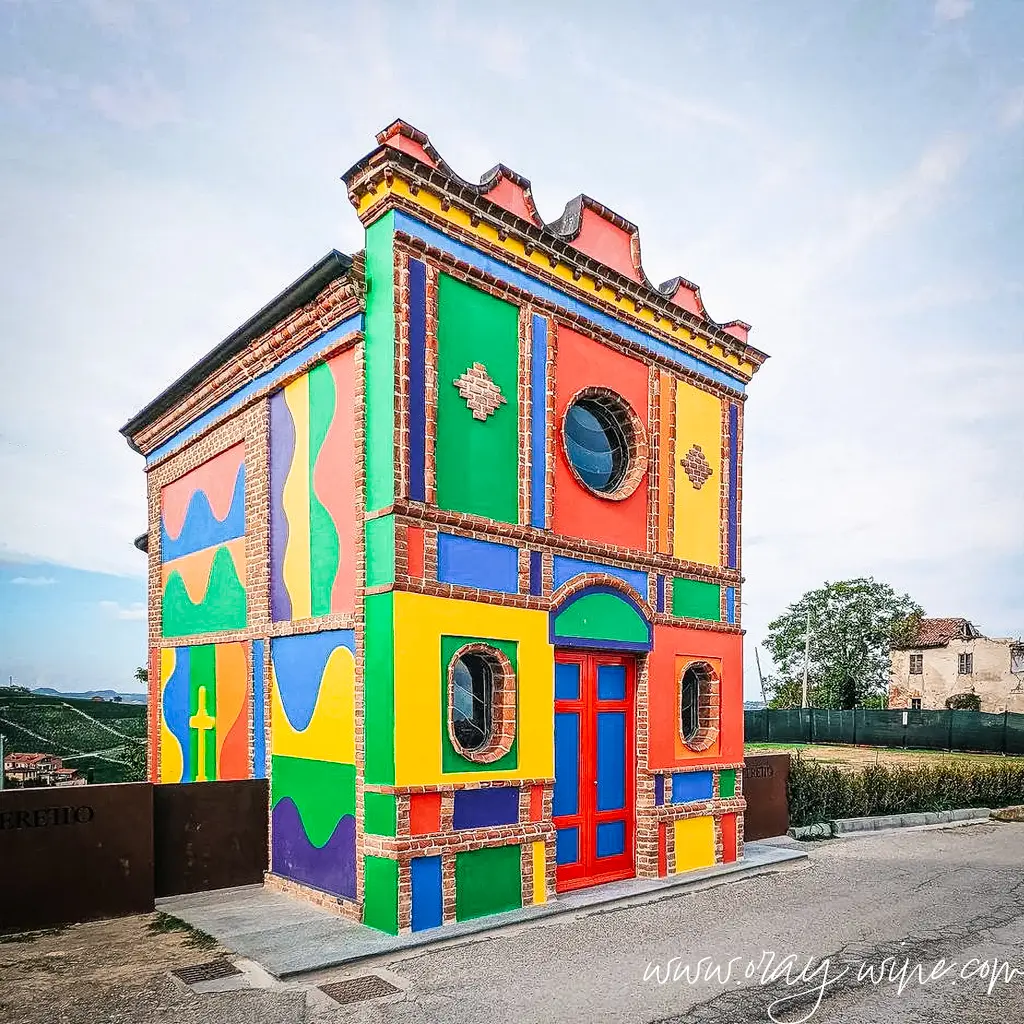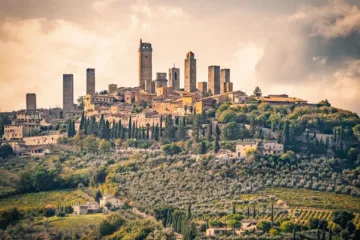
Barolo is regarded one of Italy’s greatest wines, with the best expression of the Nebbiolo grape varietal (see Valtellina for other expressions of this grape variety). Although its origins are shrouded in obscurity, its rise to prominence is not.
Supposedly, the red wines of this region were formerly purposefully sugary. They were first completed as dry wines in the mid-1800s, according to the wishes of Giulia Falletti, the last Marquise of Barolo, and the efforts of Camillo Benso, Count of Cavour, with the assistance of the French enologist Oudart.
In reality, while some wines may have included residual sugar prior to the 1850s, this was most likely owing to a random mix of several factors: Nebbiolo’s late-ripening nature, Nebbiolo‘s high sugar levels at harvest as well as the partial fermentations caused by the early cold during winter.
Modern theories credit Camillo Benso, Count of Cavour (a key figure in Italian unification) and his Italian enologist (Paolo Francesco Staglieno), a former military general, with developing a dry-styled Barolo in the 1830s and 1840s by using closed vats to avoid stuck fermentations (which also had improved winemaking hygiene).
Regardless of how Barolo evolved into its current dry wine form, the Marquise of Barolo, Guilia Falletti, was instrumental in making it popular. The Marquise created dry red wines on her Barolo estate, which she introduced to Torino’s elititist circles.
Thanks to the Marquise, the wines piqued the interest of the Savoyard royal family, who purchased winemaking estates in the Barolo area. Notably in Verduno and Serralunga d’Alba, where the former royal estate Fontanafredda is still active.
The wines were so popular that they became liquid ambassadors for the House of Savoy in Europe’s royal courts, laying the groundwork for the House’s long-standing international reputation as the “king of wines and wine of kings”.
Location of the Barolo DOCG
The Barolo DOCG is located in the northwestern portion of Langhe (Piedmont, Italy), on the right bank of the Tanaro River, where the river turns 90 degrees east.
Alba is just a few miles to the northeast of Barolo, separating it from Barbaresco. The appellation measures around 11 kilometers long and 8 kilometers wide. To compensate for its modest size, it is quite densely planted.
Some of the Barolo DOCG requirements
Barolo wines must be created entirely from Nebbiolo (although several attempts to incorporate other grape varieties were undertaken; see the Barolo Epic Battle for details).
All grapes must originate from the tightly defined hills surrounding 11 towns. Some locations, however, have become synonymous with superior quality grapes (for more information, see Barolo Crus).
The entire communes of Barolo, Castiglione Falletto, and Serralunga d’Alba are legally permitted to produce Barolo wines, while more restricted areas surrounding the communes of Monforte d’Alba, La Morra, Novello, Verduno, Grinzane Cavour, Diano d’Alba, Cherasco, and Roddi are also covered by the DOCG designation.
In reality, five villages—La Morra, Barolo, Castiglione Falletto, Monforte d’Alba, and Serralunga d’Alba—make up about 90% of the appellation. These five towns are well-known and regarded as the most significant.
The ‘Disciplinare’ requires vines in Barolo to be located between 170 and 540 meters in elevation. In practice, however, most Nebbiolo is planted mid-slope, at the lower end of the permissible height range, in order to reach full ripeness. However, some vineyard areas have been identified as producing higher quality grapes (for more information, see Bricco and Sorì).
The Barolo soils

The soils of Barolo (and Langhe in general) are the result of two geological eras: the younger Tortorian and the older Serravallian (formerly known as Helvetian). The soils in these formations have distinct properties that influence the profile of wines.
For the most part, the soils of Barolo belong to the Tortorian formation:
- Tortorian soils encompass nearly half of Barolo, as well as tiny portions of the east. This soil is made up of calcareous marls, which are more fruitful and compact than Serravalian. This soil is where the vineyards of La Morra and Barolo grow. The wine made in this region is likely to be more fragrant, delicate, and gentler. It is considered to be maturing significantly more quickly. (See the Modern vs. Traditional Barolo Epic Battle, for more about the two dominant styles of Barolo due to the soil type)
- Serravalian soils consist primarily of sandstone, silty marls, and sand. It’s poorer, less compact, and less fruitful than Tortorian soil. The wines of Monforte d’Alba, Serralunga d’Alba, and a portion of Castiglione Falletto have greater strength and depth. This area’s Barolos are known for their denser bodies, greater robustness, and structure. They last far longer and require more time in the bottle. (For additional information on the two prominent Barolo types based on soil type, see the Epic Battle of Modern vs. Traditional Barolo).
Major Changes in Barolo winemaking
Traditionnally, the great majority of Barolo was produced by merchants and was often made by blending (see assemblage) wines from different vineyards and different communes. This method had the advantage of ensuring that the style remained consistent from vintage to vintage. However, it also obscured the uniqueness of each vineyard site.
This position altered dramatically in the 1960s and 1970s, as estate bottling became more common. As a result, single-plot wines became more common, demonstrating that different vineyards or zones produced wines with distinct characters, revealing nuances unique to particular areas.
Since the nineteenth century, Barolo’s finest sites (see Barolo’s Crus for more) have been recognized by producers and wine merchants alike, with grapes from those places commanding higher prices.

Barolo Menzioni Geografiche Aggiuntive

To make it official, the Barolo Consorzio, in collaboration with the province of Cuneo and the numerous Barolo villages, took on the difficult task of regulating the use of vineyards and zone designations historically associated with the production of exceptional wines.
After several years of hard effort, the ‘disciplinare’ added the ‘Menzioni Geografiche Aggiuntive’ (or MGA), which is a list of delimited vineyard areas that can appear on the barolo label.
However, it is vital to highlight that these extra designations do not indicate a quality pyramid among the many MGAs because they are not a categorization system.
There are a total of 181 geographical classifications, 11 of which are communal. Wines may be labeled with one of the additional geographical designations if the grapes come from the specified area.
Among the most well-known locations are Brunate, Bussia, Cannubi, Cerequio, Francia, Ginestra, Monprivato, Rocche dell’Annunziata, Rocche di Castiglione, Sarmassa, Vigna Rondia, and Villero.
Today, Barolo is perhaps one of Italy’s most rigorously vineyard-charted appellations.
Stylistic evolution of Barolo
Until the 1970s, Barolo was produced in a unique and traditional style. The wines were macerated for 1 to 2 months before being aged for 4 years or more in huge neutral barrels.
Long wood maturation was required to soften the harsh tannins extracted during the protracted macerations, but it also increased the risk of losing Nebbiolo‘s sensitive varietal character.
The resulting wines were astringent and tannic while young, and only acceptable after extensive bottle maturation (sometimes decades).
In the 1980s, revamped winemaking procedures resulted in more ‘modern’ Barolos (see Modern vs. Traditional Barolo, An Epic Battle, for more information), in line with the dominant international style. Upon release, the wines were fruity and accessible. They had softer tannins, higher concentration, and significantly more oak.
The distinction between ‘traditionalists’ and’modernists’ is much less clear today than it was previously. Although there are outliers, many producers are now producing a style that falls somewhere between the two extremes, with a more nuanced approach and cautious use of oak. The goal is to improve Nebbiolo‘s character while also managing its tannic and acidic nature with a combination of traditional and modern processes.

What a typical Barolo wine look like
Barolo is rarely a rich color. It ranges in color from bright ruby to garnet, gradually turning brick-orange. The wines have rich and complex scents of roses and violets, fresh red berries, cherries, tar, and earthy notes.
All of this gradually evolves into more refined scents of dried fruit, dried flowers, spices (nutmeg, cinnamon), and mint. These base aromas are typically mixed with additional layers of leather, tobacco, meaty aromas, licorice, and white truffle.
The palate demonstrates concentration, substantial texture, robust body, and Nebbiolo’s famous acididity-tannin core.
The wines normally require time in the bottle to smooth (see Tannin Polymerization), soften, and achieve optimum balance.
Barolo wines generally benefit from long-bottle-aging (see How good wine ages, for more) ho and require this extended maturation to reach their full potential and scent complexity (although some examples can be enjoyed after only a few years in bottle).
Barolo DOCG, Aging Requirements
According to the Barolo DOCG criteria, Barolo wines must be matured for at least 38 months, with at least 18 months spent in wood, before commercialization.
Riserva Barolos must be matured for a total of 62 months, including at least 18 months under wood, before commercialization.

Follow me on my Social Media
Wine is a gourmet treasure, do not abuse alcohol!
None of this content has been sponsored
I did not receive any gifts or free samples that could be related to this article


